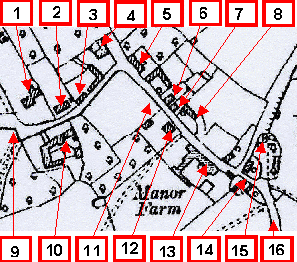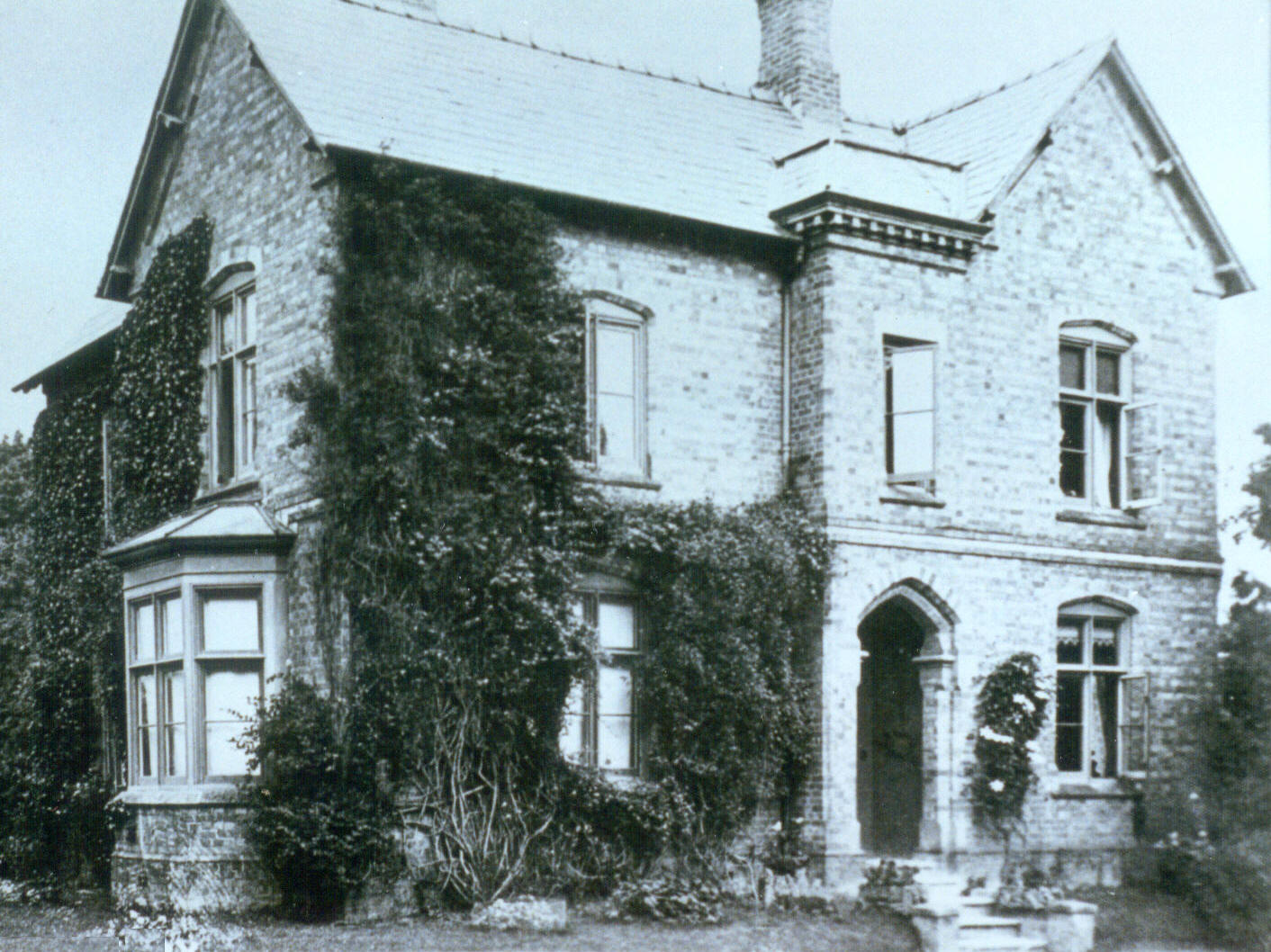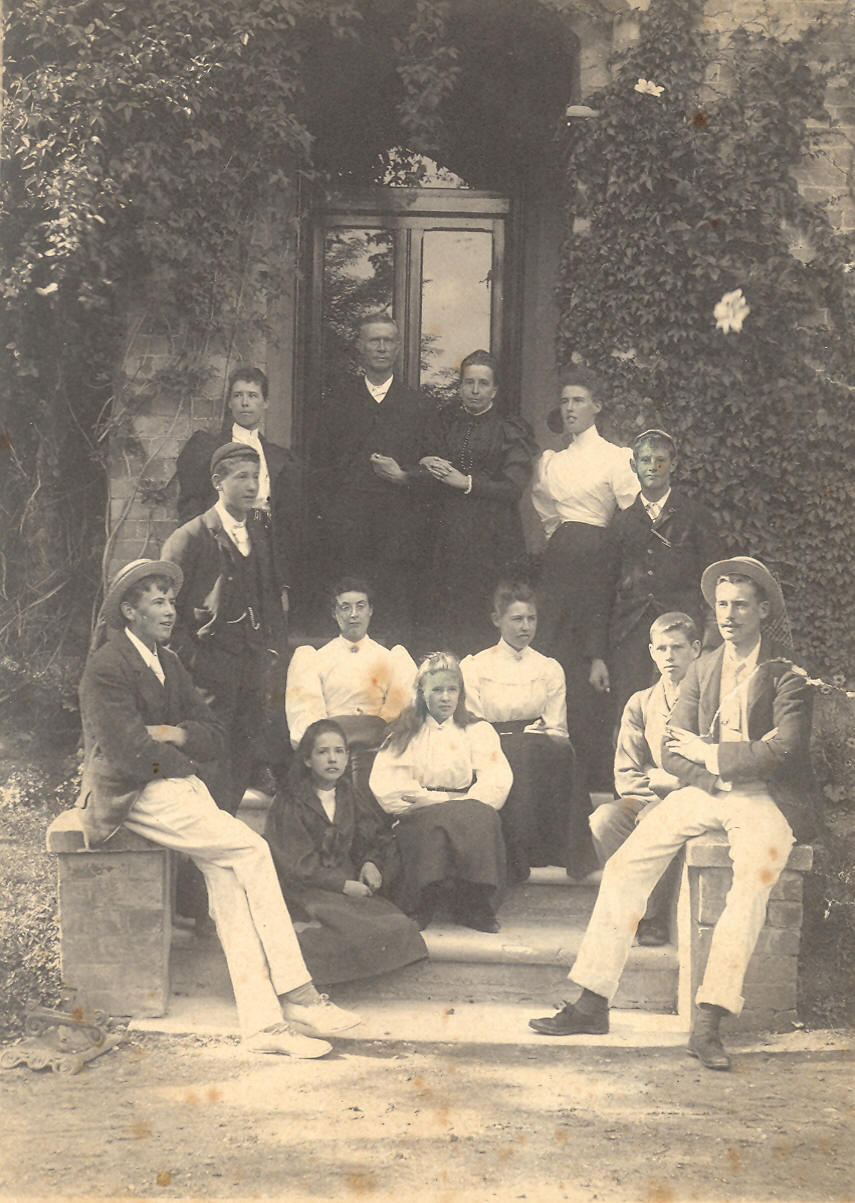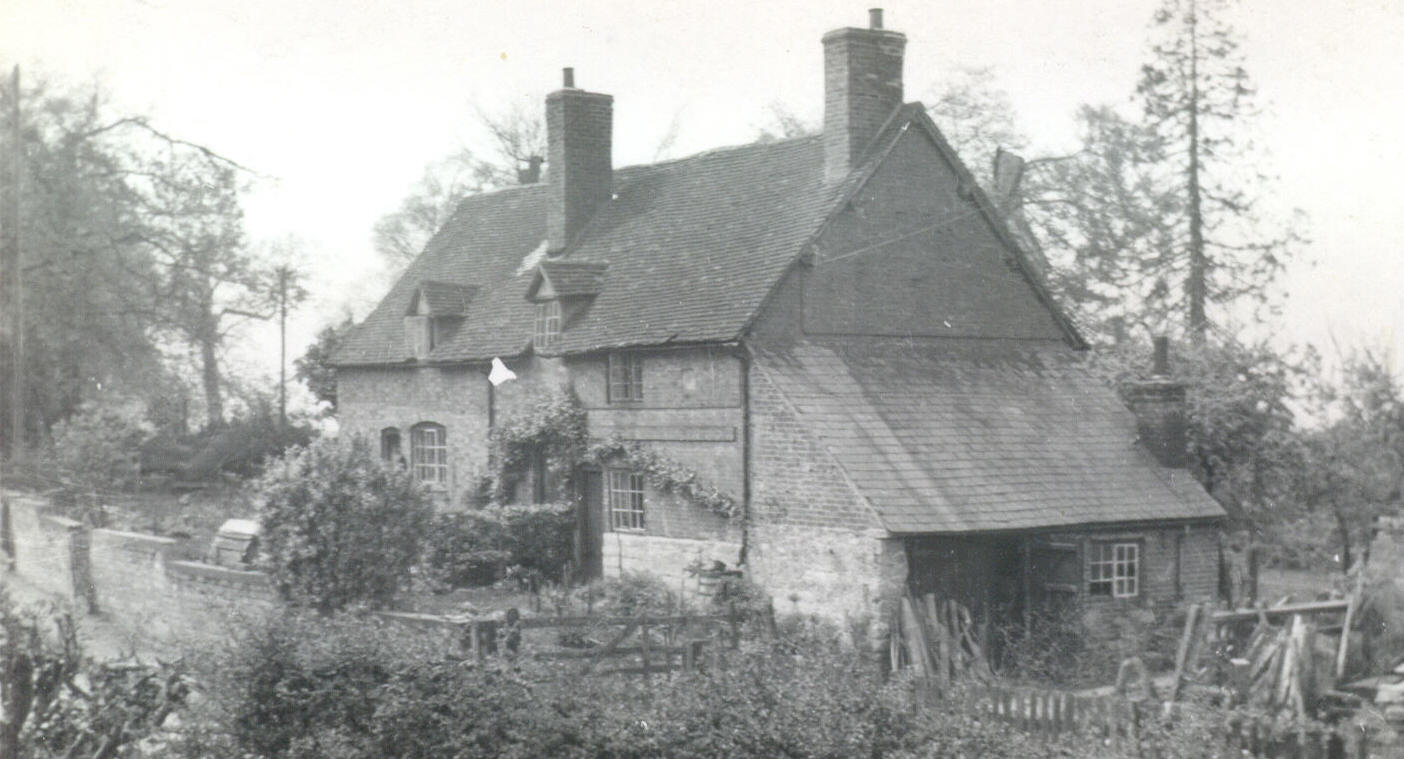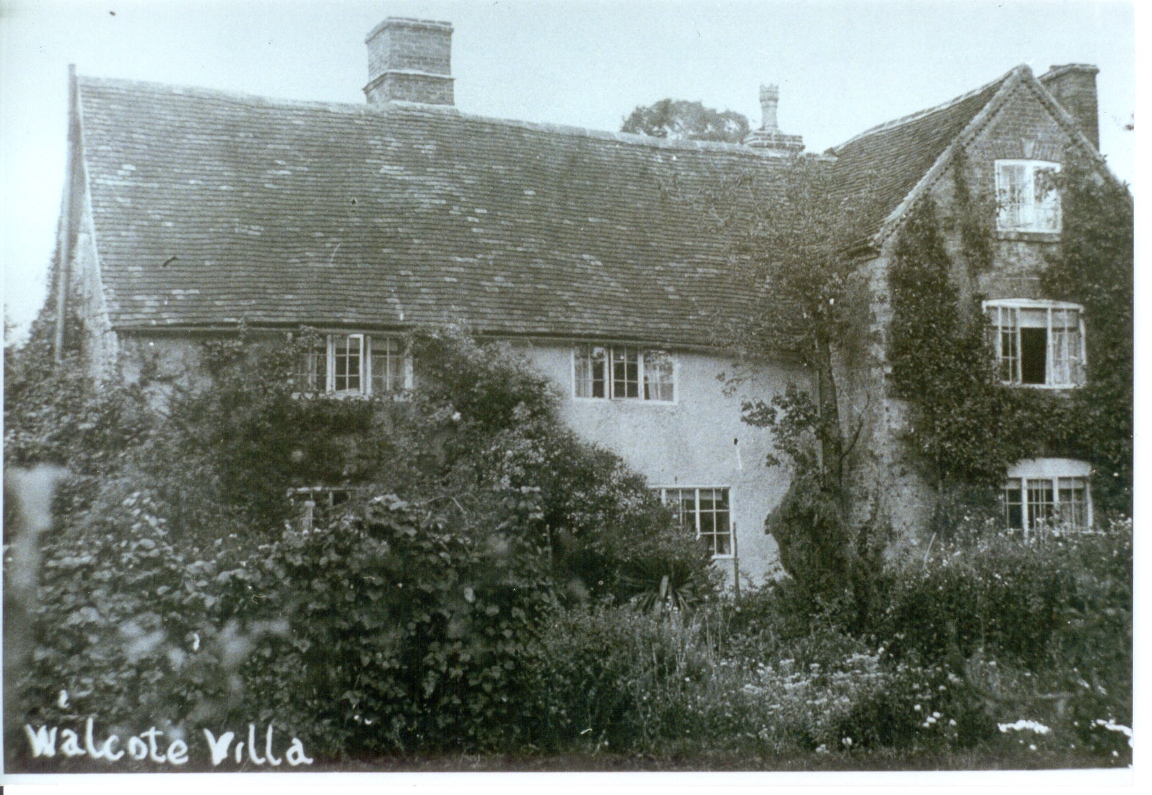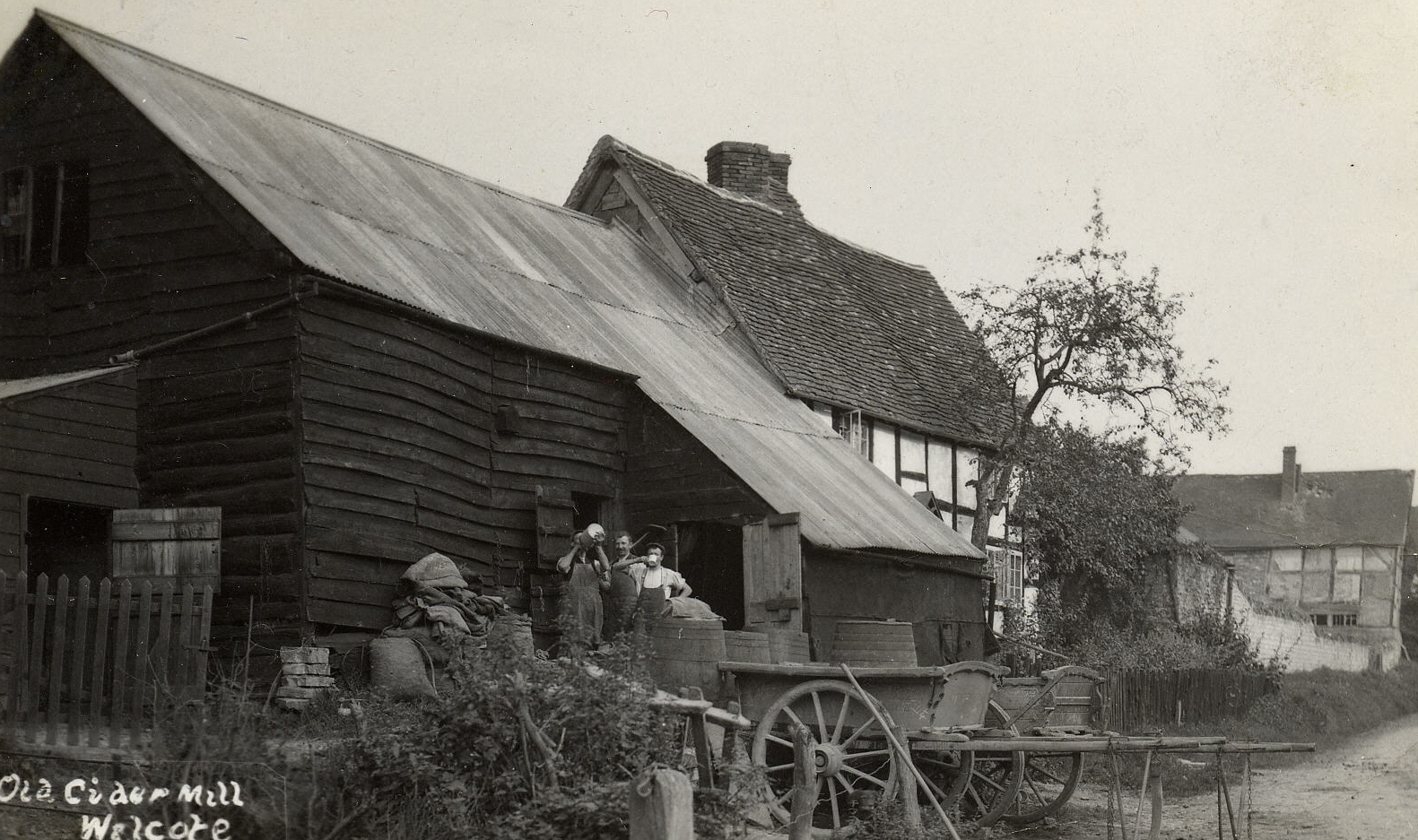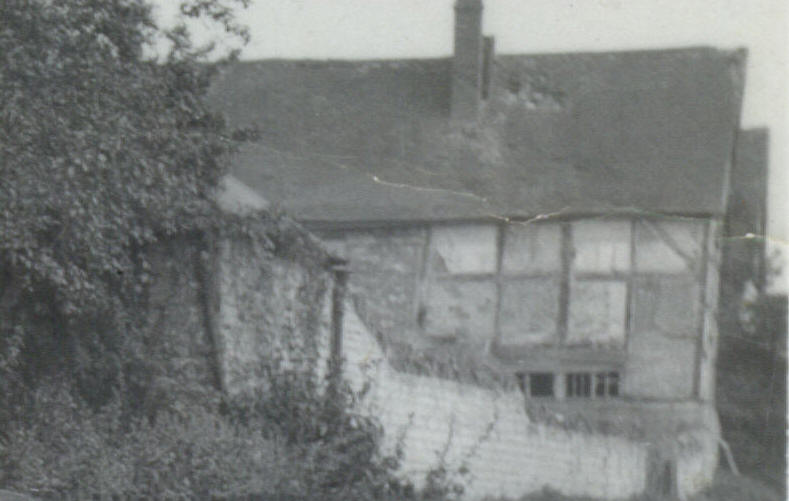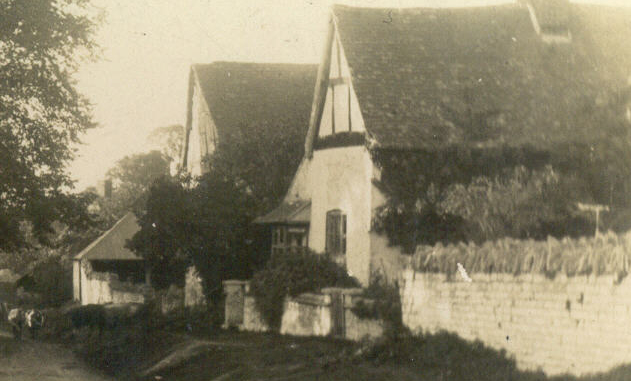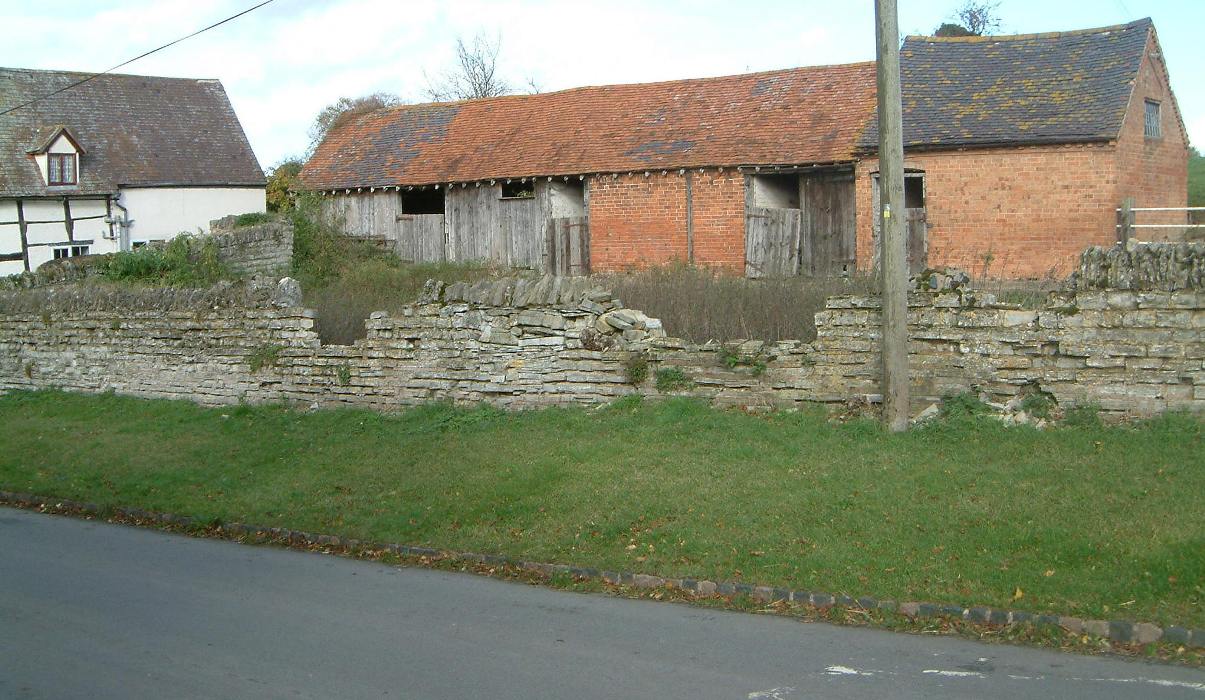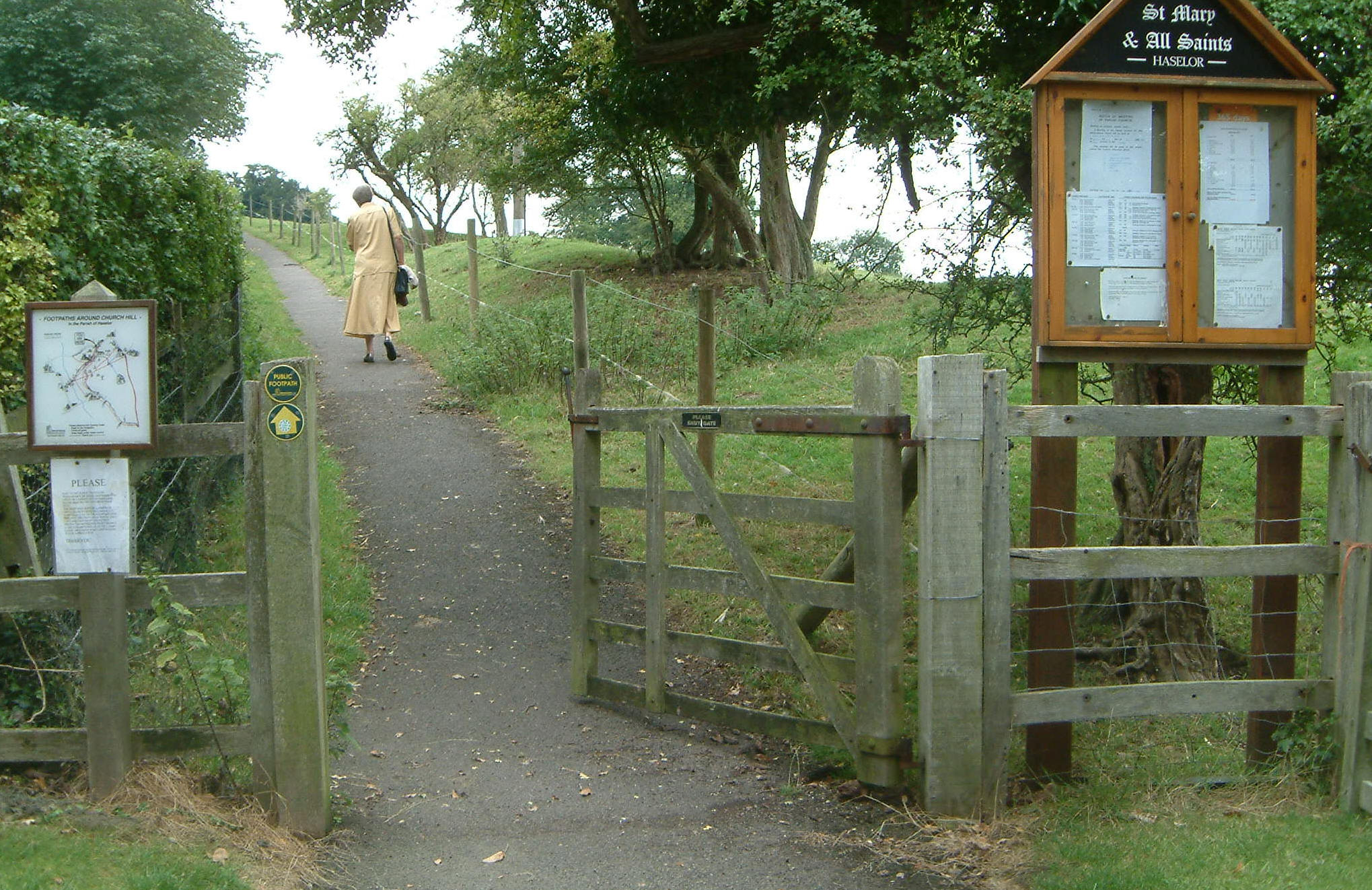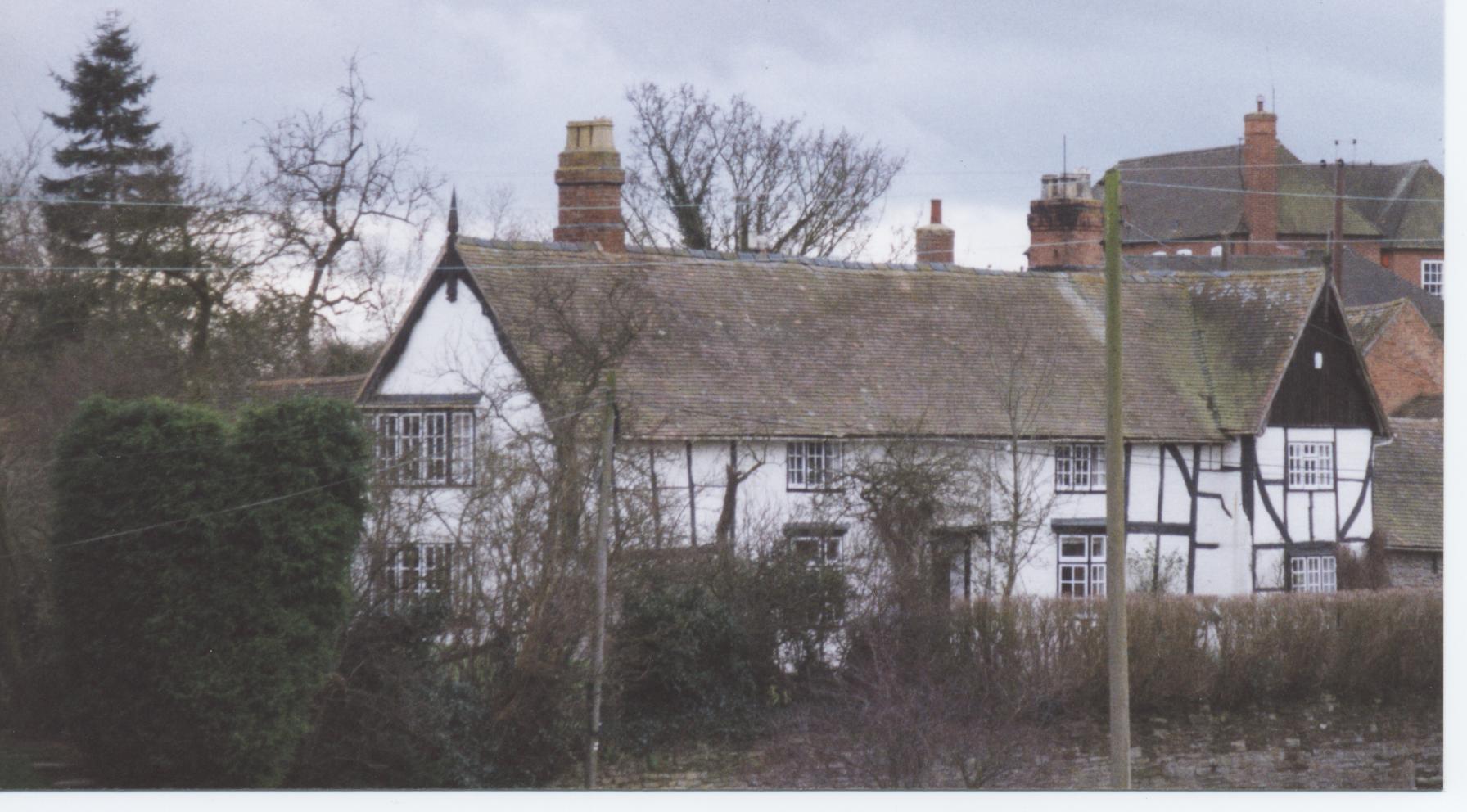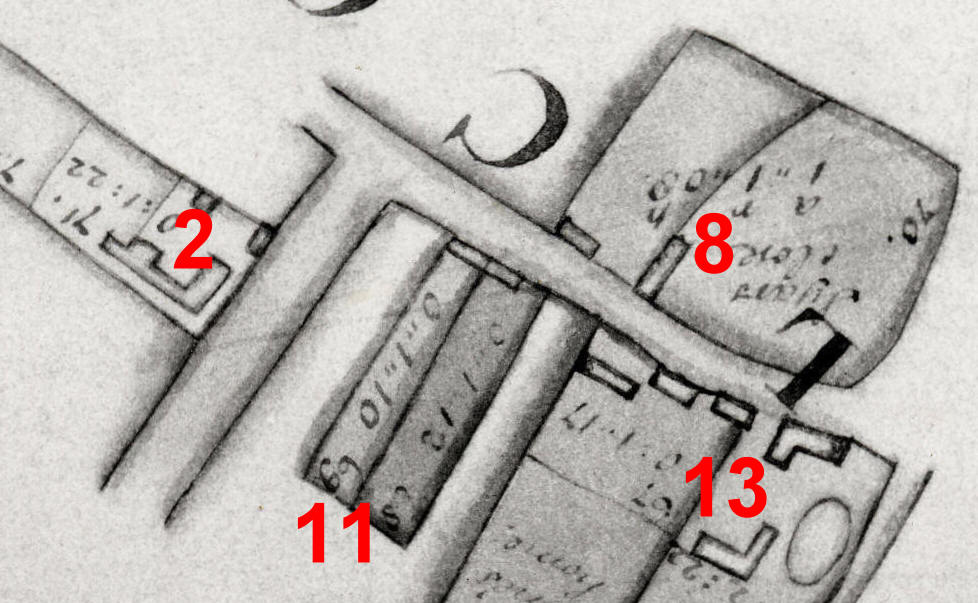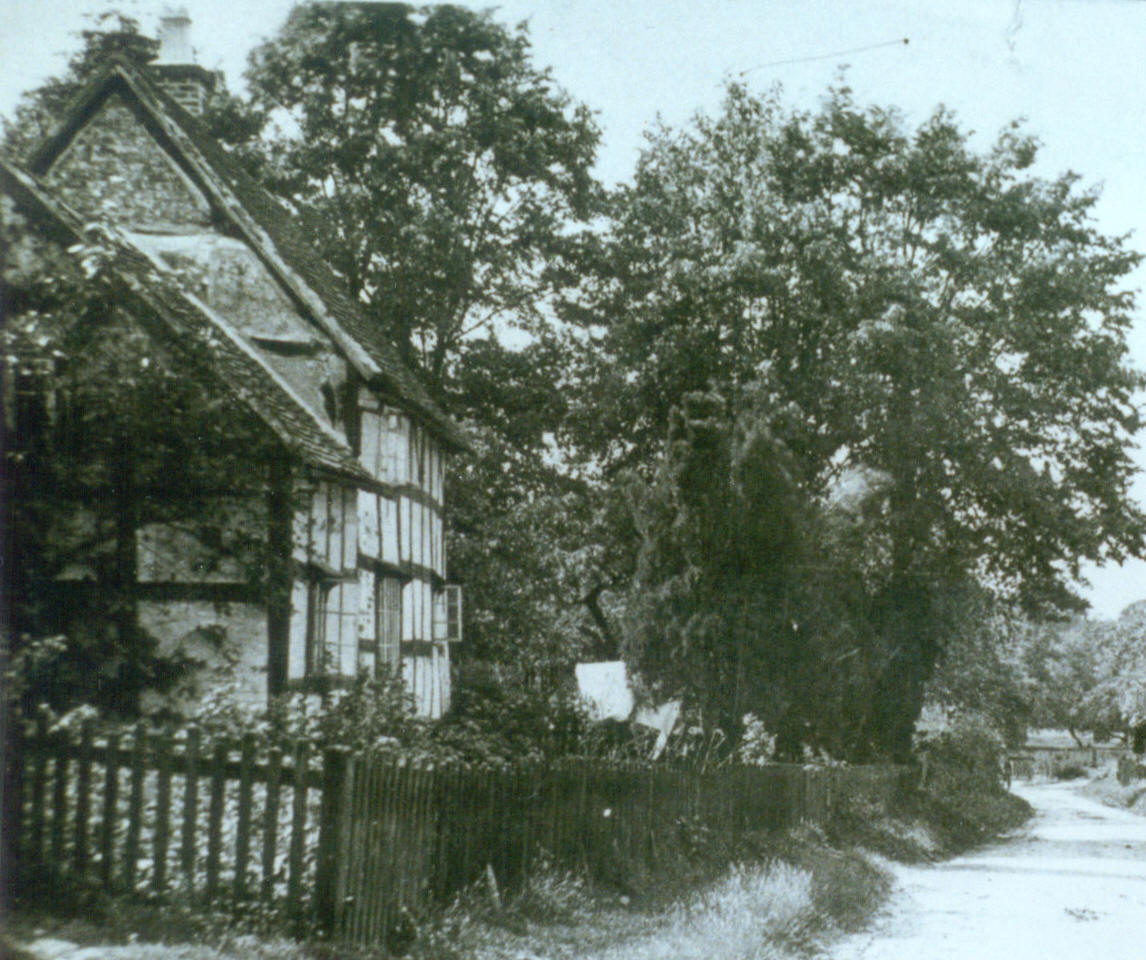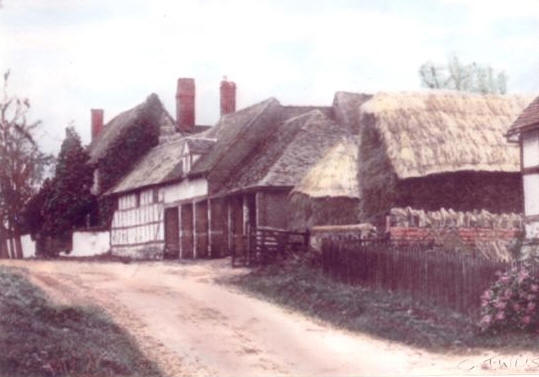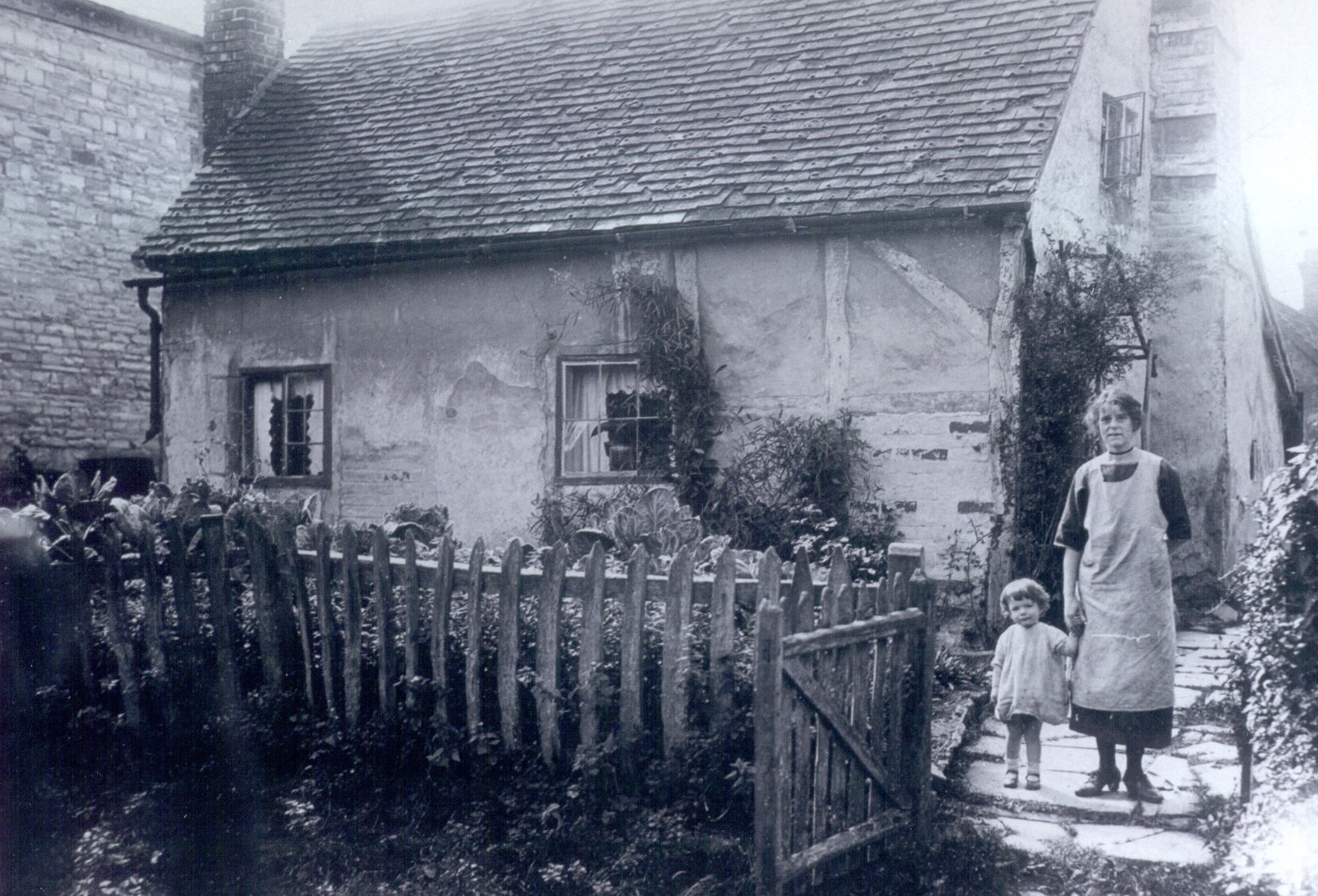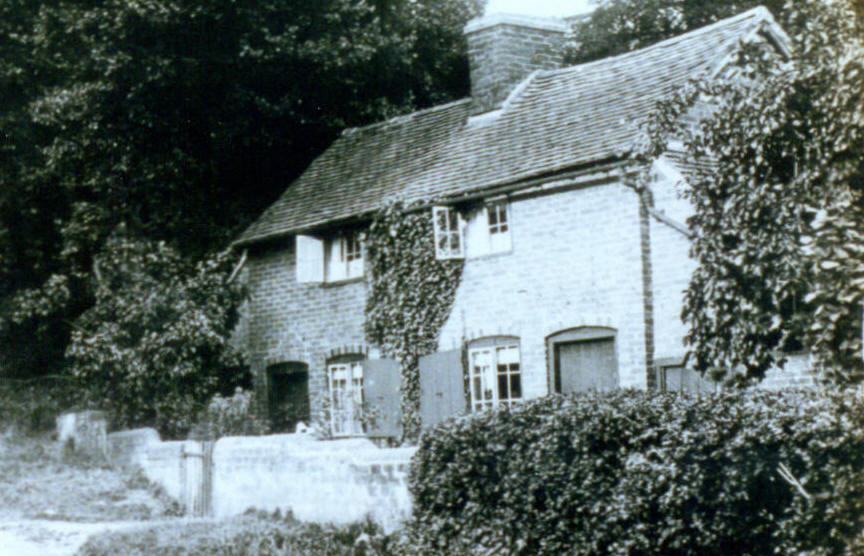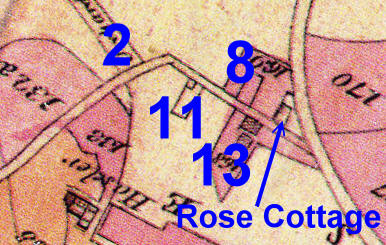|
A Look Back In Time When Walking Through Walcote Have a copy with you! |
|
||
|
|
|
|
|
|
1. The Old Vicarage. Rev John Heath Sykes (who was vicar of Haselor Church for 45 years) with his wife and 11 of his 14 children, outside the front door, 1893. He succeeded in obtaining subscriptions to the amount of £1981 2s. 9d. towards the building of a vicarage house. The house was built in 1869, after the demolition of 2 cottages. |
2. Cruck Cottage. c1946. In 1752, a farmhouse and a pub called "The Boot Inn". After 1767, it ceased to be a farmhouse and was converted into 3 cottages. In the early 1960’s it was one cottage and you can see where the other two front doors have been removed, by the shape of the windows. | ||
|
|
|
||
| 3. The Old Thatch Barn. The brick wall on the right of Cruck Cottage is where this old thatch barn stood. The stone wall, on the right of the gate, was the back of a shed with a thatch roof. | 4. Walcote Farm. c1920. Previous name "Walcote Villa". The room on the left-hand side was used as a school in the 1860's. A road, known as Walcott Street, use to go down the driveway, and join up to the road from Billesley to Great Alne. | ||
|
|
|
||
| 5. The Cider Mill. c1920. The wall in front of the mill, is where people from a wide area, came with their horse-drawn carts, unloaded their apples/pears and afterwards to take home their barrels of cider. Last used in 1947. | 6. Paul Pry Inn. c1920. Farmhouse and pub, which was then derelict. A garage to Paul Pry Cottage now stands on the site. The farm buildings to the left, now called Flaxhide, use to belong to Paul Pry Inn. | ||
|
|
|
||
| 7. Paul Pry Cottage. c1910. There was a door in the bow-fronted window, because this was the village butcher's/grocery shop. An earlier name for this cottage was "Vine Cottage". The house behind is the Paul Pry Inn. | 8. The Old Barn. A description of this area, including the ground to the right behind the high stone wall, in 1752 says "A House, Barn, Orchard & Close call'd Syars Close". Whole farm was 36..3..32, meaning 36 acres, 3 roods and 32 perches. | ||
|
|
|
||
| 9. The Village Pound. The village pound was on the small piece of flat ground in the corner of the field, to the right of the church notice board. This is where stray animals were kept. An entry in the Court Records shows:- George Heminge of Haselor presented for rescuing of cattle that were going to the pound. Fine made in Trinity 1672 | 10. The Knoll. Farmhouse with 93 acres in 1767 belongs to John Heming. The land stretched from behind the house to Withycombe Wood. The O.S. map of 1887 shows that the farm buildings to the right, use to be joined up to The Knoll. | ||
|
|
|
||
| 11. Lime Gables. This estate map of the Earl of Warwick, 1752, shows two plots of ground on this site. One plot No. 69 on map has 2 tenants and the map shows 0..1..10 meaning no acres, 1 rood and 10 perches. Plot No. 68, the tenant is Thomas Lane. There are 4 roods to the acre and 40 perches to a rood. | 12. Shakespeare Cottage. c1910. A farmhouse which John Lane of Walcote Farm bought in 1755 for the sum of one thousand and one pounds and seven shillings of good and lawful money of Great Britain. The farm had a total of 109 acres in 1767. Most of the land was around Crosslanes Farm. In 1881 there were 5 girls boarding at a school here. | ||
|
|
|
||
| 13. Walcote Manor. c1900. A document of the 1700's says this house is reputed to be the manor of Haselor & Walcote. In 1752 there was another farmhouse with 57 acres, which was more than the 49 acres at Walcote Manor, where the two thatched ricks stand in the picture or where you can now see a dutch barn and entrance to the farm. | 14. Lime Tree Cottage. 1927. This house stood next to Dingle Well and was demolished in the 1970's. The wash house is still there. The little girl, Beryl Price, in the picture wrote in her Journal that “The washhouse was outside and in it was a large boiler with a fireplace underneath. Mum had to get a good fire going to heat the water and then rub the clothes on a wooden board to get them clean. | ||
|
|
|
||
| 15. Holloway Cottages. These cottages have been built on an old road which went behind Rose Cottage and joined up to the old lane. Mary Savage, known as "The Witch", lived here in the 1870's. She has been described as ‘having a wrinkled face with a hooked nose that almost met her pointed chin’. The cottages have been rebuilt and now called Japonica Cottage. | 16. The Old Road. This is part of a map from a sale catalogue of 1806. The map shows that the road coming from the Walcote crossroads, went the other side of Rose Cottage following the high bank round to the lane going to Red Hill on the Turnpike Road leading from Stratford upon Avon to Alcester. (A46). | ||
| Researched & Designed by John Finnemore, Walcote Farm. | |||
|
Email john@walcotefarm.co.uk |
|||
|
Website www.walcotefarm.co.uk |
|||
| Back to Local History | |||
